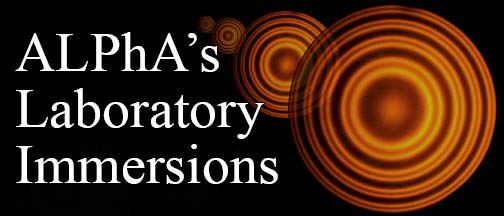- Home
- What We Do
- Laboratory Immersions
- Immersions 2019
- Imm2019Mich_ThinFilms
Thin-film Fabry-Perot Etalons for Intermediate and Advanced Labs
University of Michigan, Ann Arbor, MI, June 10 - 12, 2019
4 setups available


2) Zeeman Effect with a thin-film Fabry-Perot etalon and a permanent magnet: introduces students to the study of the “hyperfine structure” of spectral lines, and in particular to the splitting of degenerate energy states in the presence of a strong magnetic field. It presents the students with clear evidence of LS coupling. Participants will perform measurements of both the normal and the anomalous Zeeman Effect using a cadmium vapor lamp placed in a variable-gap permanent magnet. The splitting of the lines are examined using a thin-film Fabry-Perot etalon and imaged by a computer-controlled camera.
Participants will:
a) Measure the strength of the magnetic field as a function of the pole separation distance.
b) Perform the normal Zeeman Effect experiment, using an appropriate bandpass filter (640 nm, 10nm FWHM), of the 643.8 nm transition (31D2 -> 21P1). Record images of the linear (perpendicular to the field) and circularly polarized (parallel) light components of the Zeeman splitting.
c) Perform the anomalous Zeeman Effect, using an appropriate bandpass filter (508 nm, 10nm FWHM), of the 508.6 nm transition (23S1 -> 23P2). Record images of the linear (perpendicular to the field) and circularly polarized (parallel) light components of the Zeeman splitting.
d) Analyze all images and measurement and compare to accepted values.
Please refer to Figure 3 and 4 below.

Figure 3: Apparatus for Zeeman Effect Experiment

Figure 4: Normal Zeeman Effect in cadmium. Image perpendicular to the magnetic field.
SCHEDULE:
Morning: Introductions, review of Fabry-Perot interferometry, and our Czerny-Turner spectrometer.
Afternoon: Completion of experiment 1 described above.
Morning: Discussion of the Zeeman Effect Apparatus and Theory of experiments.
Afternoon: Performance of Normal Zeeman Effect experiment; and if time allows, begin work on the anomalous Zeeman Effect.
Morning: Completion of Anomalous Zeeman Effect.
Afternoon: Data Analysis. Lab Tours if time allows, and wrap up.
Experimental setups can range, depending on implementation, from $1,600 to $10,000 per setup. Details will be provided to participants.
WARNING: (1) Strong magnetic fields (near 1 Tesla) are used. (2) Hot cadmium lamps are manually moved in and out of the magnetic fields.
Host and Mentor:

Ramón O. Torres-Isea is Director of Intermediate and Advanced Physics Laboratories at the University of Michigan, Ann Arbor. He was recipient, with Prof. Carl Akerlof (Univ. of Michigan), of the 2015 Jonathan F. Reichert and Barbara Wolff-Reichert Award for Excellence in Advanced Laboratory Instruction. He received his B.S. and M.S. in Physics from Eastern Michigan University in 1980 and 1983, and quickly joined the workforce, developing a career as an industrial physicist. Since his return to academia twenty four years ago, he has continuously worked to improve the teaching of physics laboratories. He manages the daily operations of the laboratories, teaches sections of intermediate laboratories as needed, and co-teaches every semester the senior laboratories with a rotating group of faculty members. He taught also for ten years a graduate physics course in computer control of research instrumentation at the department. Over the years Ramón has performed research in Optical Depolarization in Birefringent Crystals, Electrical Arc Physics, Shape-memory Alloys, and for the past ten years in Nuclear Physics, as part of a team led by Prof. Frederick Becchetti at the University of Michigan-University of Notre Dame TwinSol facilities. He is co-developer of the UM-DAS, a deuterated scintillator array for fast neutron detection. He is also co-inventor of three U.S. patented technologies: actuators which couple shape-memory thermal actuating elements with magnetic actuating elements; arc-suppressing current interrupters; and asynchronous magnetic-bead rotation technology for use in identifying and treating bacterial infections. Ramón developed and has taught for nine years Forensic Physics, an outreach survey class for high-school students.
Ramón O. Torres-Isea, Department of Physics, Univ. of Michigan, 450 Church Street - Randall Lab, Ann Arbor, MI 48103.
Email Address: rtorres@umich.edu Phone: 734-764-3443





